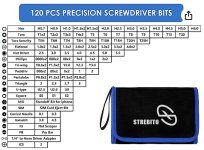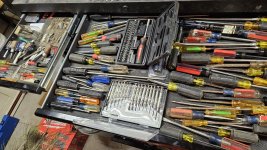Ikesaccordions
Active member
Hohner isn't the only maker which used brown plastic slides. I had some that were breaking up in the bass of an Acme, so I just took some the same thickness from a full sized 120 bass bass. Seeing they were a bit wide for the channels, I carefully put them on a horizontal belt sander and gradually buffed them to fit. But much to my surprise the holes on my aluminium slides were a mite further apart so that at one end they were not at all closely aligned.
You can actually make slides without access to a machine shop. Buy some plain stock the correct thickness, and if necessary saw it to the needed width with a small table saw. Make round holes perfectly centered, and make a sqare steel template. Clamp the slide with the rectangular template, and hand-file it.
The template is just one rectangular hole you center on each round hole. Clamp the slide between 2 straight flat bars so as not to bend it. Hardwood slats or aluminum stock. Make an opening in the clamping jig to place your template when filing
You can actually make slides without access to a machine shop. Buy some plain stock the correct thickness, and if necessary saw it to the needed width with a small table saw. Make round holes perfectly centered, and make a sqare steel template. Clamp the slide with the rectangular template, and hand-file it.
The template is just one rectangular hole you center on each round hole. Clamp the slide between 2 straight flat bars so as not to bend it. Hardwood slats or aluminum stock. Make an opening in the clamping jig to place your template when filing
Last edited:


